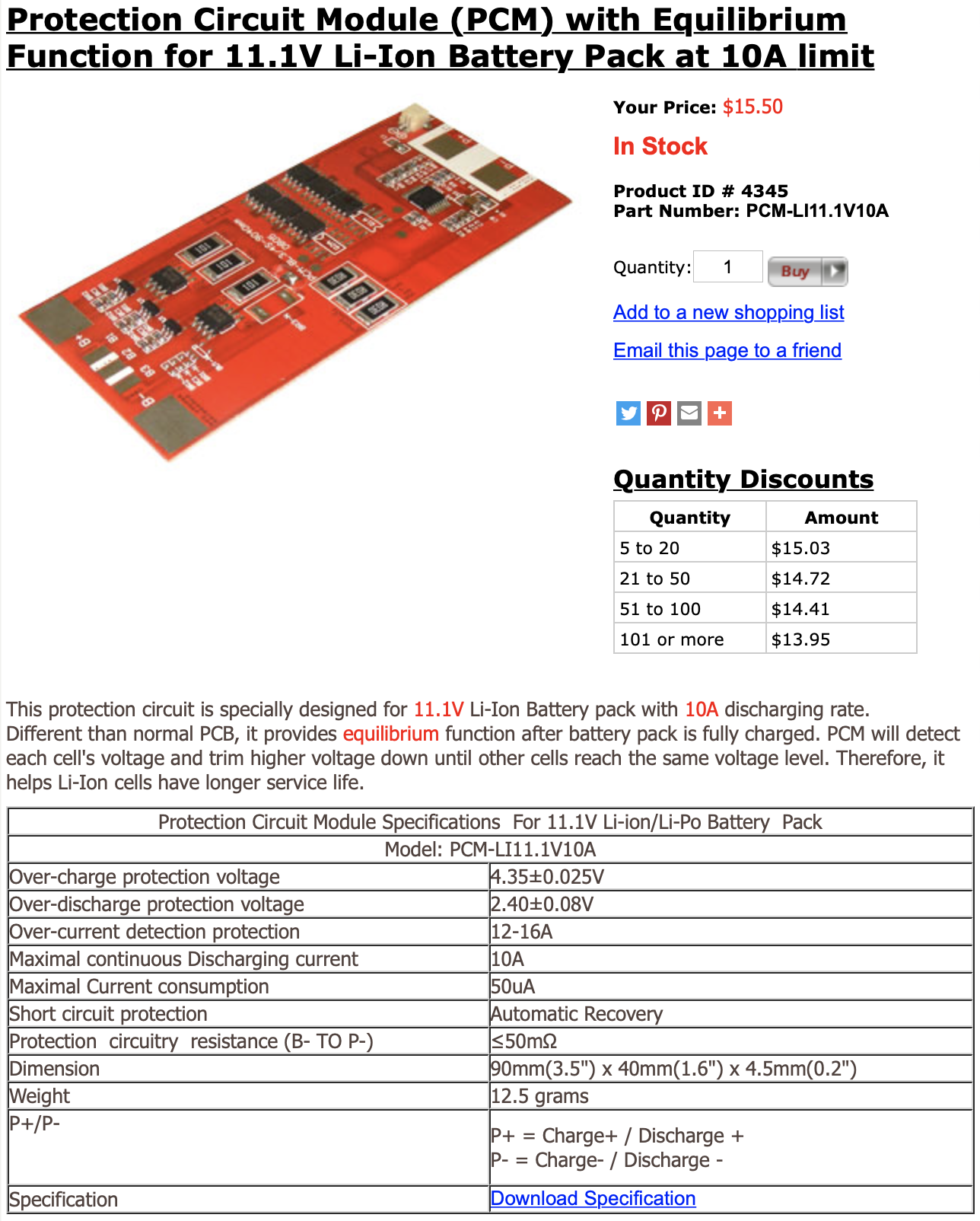The current MacBook Pro 13 inch has a battery capacity of 58 watt hours and In order to charge the laptop 2 times the battery pack needs to have a minimum capacity of 116 watt hours (very tough math I know).
This is the point in time where I started doing research into battery chemistries and the pros and cons of each battery type. At the bottom of this post I will provide hyper links to all of the research I have done. I will include the specific research I had to do for lithium ion batteries such as their capacities, charging and discharging abilities, safety, and what their data sheets actually mean. When describing the parts I will order I will go over their brief purpose but I highly recommend reading all of the links at the bottom of this post.
Through my research in order to achieve the capacity desired within the size of the MacBook Pro frame I knew I was going to need lithium ion batteries in the shape of a pouch not a cylindrical cell. I searched online and found this lithium ion battery that will work well. The single cell has a capacity of 48 watt hours. In order to achieve the capacity desired I will use three of them in series because this will allow faster charging than parallel and achieve the desired minimum capacity.

Because the battery pack will be a three cell lithium ion pack I need to balance charge them. Balance charging ensures the pack will receive a safe charge (preventing a Samsung style battery problem). The same balance charging board will also prevent over charging and discharging because lithium batteries are super sensitive. I settled on this balance charger because it can handle charging the batteries as quickly possible and will not be destroyed by discharging the batteries quickly.

The other difficulty is that in order to charge a three cell battery pack you need to deliver a constant 12.6 Volts (each cell needs to charge at constant 4.2 volts). This proposes a difficult challenge because no wall sources (that I currently own) will provide a constant 12.6 volts. Therefore I need to convert whatever source I am using to 12.6 volts. I’m going to achieve this with this variable voltage converter set to 12.6 volts.

As for the wall converter (AC to DC) I am just going to use a spare large 12 volt wall plug (it can pump out 8 amps or 96 watt hours total). I am doing this because in the near future I will provide power using USB C. For now the proof of concept of being able to make my own lithium battery pack (and able to charge and discharge) is satisfying.
I think it is also extremely important to mention that normally when designing battery systems with lithium ion batteries you need to pay careful attention to how quickly you can safely charge the pack. These specific batteries can handle up to 12 amps of power during charging. This enables lots of overhead especially because USB C (using power deliver protocols) can only provide up to 100W (well within the capability of the batteries). Therefore in my situation using the wall wart which can only provide 96 watts I’m well within the power rating to safely charge the batteries.
Here are some of the super useful links if you want to build a battery pack of your own
I recommend reading as much as you can before you embark on building your own battery pack.
 Harrison Freedman
Harrison Freedman
Discussions
Become a Hackaday.io Member
Create an account to leave a comment. Already have an account? Log In.